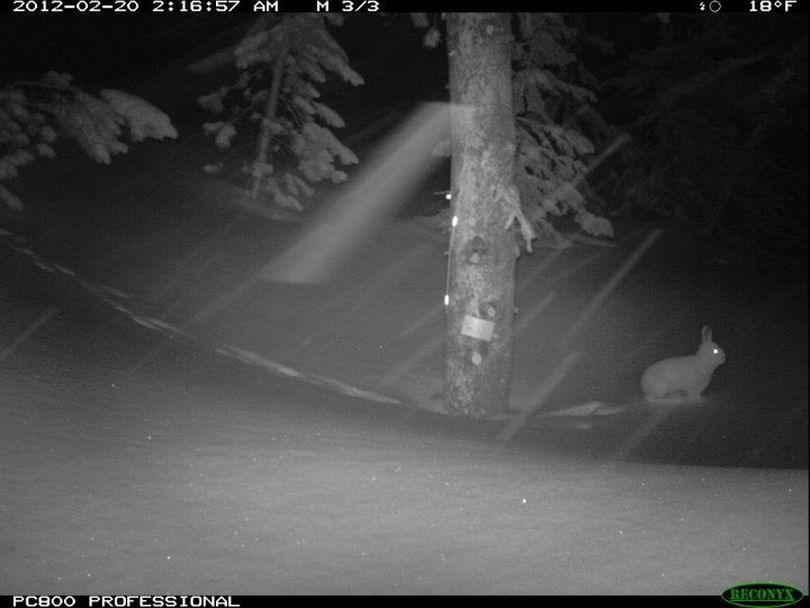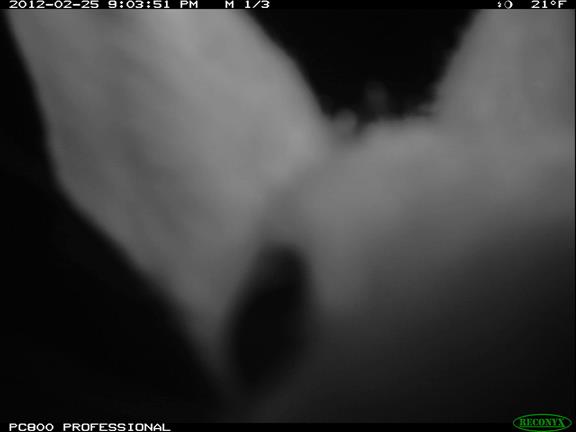Trail-cam mystery critter identified

 WILDLIFE WATCHING -- A snowshoe hare is caught in action by a trail cam set high in the Cabinet Mountains for a wolverine research project funded by the Friends of the Scotchman Peaks Wilderness.
WILDLIFE WATCHING -- A snowshoe hare is caught in action by a trail cam set high in the Cabinet Mountains for a wolverine research project funded by the Friends of the Scotchman Peaks Wilderness.
See martens, bobcats, volunteer helpers -- and even a wolverine -- in the group's wolverine research Facebook photo album.
The hare in the photo above normally wouldn't be able to go eyeball to eyeball with the camera mounted up on the trunk of a tree, but winter winds drifted snow into a viewing platform.
Some readers viewed the mystery close-up photo (left) and guessed "rabbit." Close, but not correct.
Read on for the differences between "hares" and "rabbits."
Differences in the physical features of hares and rabbits include.
- Hares are generally larger and faster than rabbits.
- Hares have longer ears and larger feet than rabbits.
- Hares have black markings on their fur.
- Rabbits are altricial i.e. they having young that are born blind and hairless. In contrast, hares are generally born with hair and are able to see (precocial). Young hares are therefore able to fend for themselves very quickly after birth.
- A young hare is called a leveret and a young rabbit is called a kitten, kit, or, least correct but very commonly, a bunny.
- Hares have very long and strong hind legs, more so than rabbits.
- Rabbits' brown summer fur is replaced with fur that is more grey. Hares, especially those living in cold, snowy regions, turn white in the winter.
- Hunters say that hare has a much stronger, gamier flavor than rabbit (which actually does taste like a milder version of chicken).
Similarities:
- Rabbits and hares both molt and then grow new hair. This happens in both the spring and in the fall.
- Both rabbits and hares have short tails.
